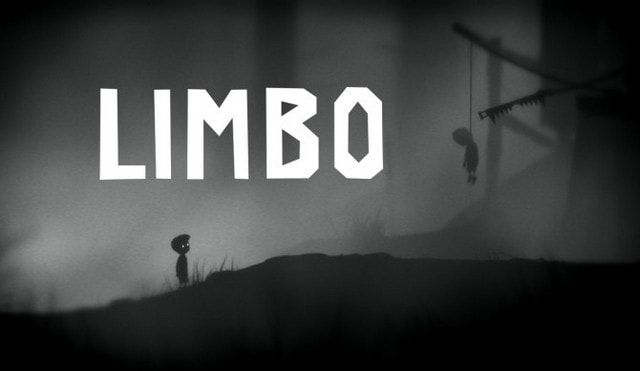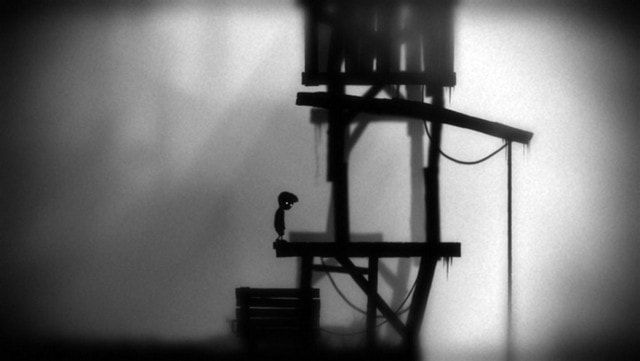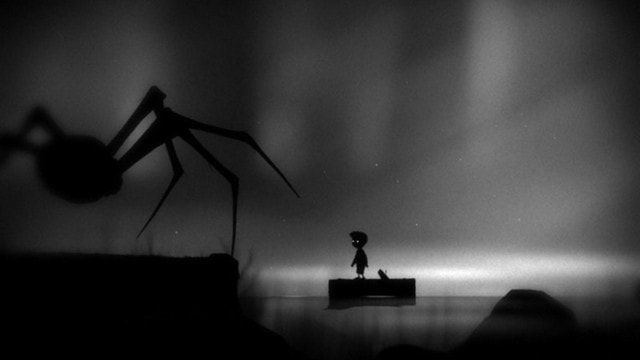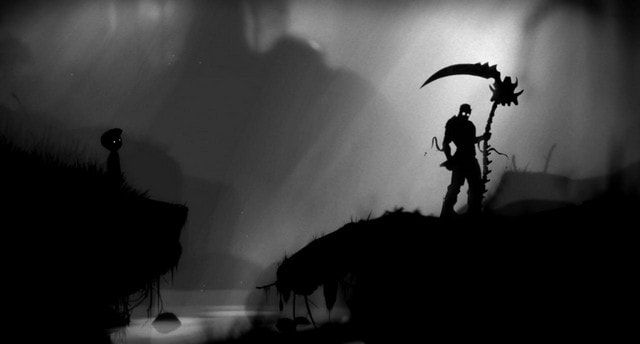Limbo – невероятно атмосферный пазл-платформер для iPhone, iPad и Mac
Несмотря на то, что проект Limbo изначально разрабатывался инди-студией Playdead, состоящей на то время из трех человек, игра стала бестселлером буквально сразу же после запуска. Если по каким-то причинам вы все еще не ознакомились с этим замечательным платформером, рекомендуем прочесть материал ниже.
Концепция Limbo была предложена датчанином Арнтом Йенсеном еще в 2004 году, однако тогда он был рядовым сотрудником IO Interactive и его идеи не были восприняты всерьез. Позже Йенсен организовал независимую студию Playdead, в которую входили два программиста, выступающих одновременно инвесторами. Согласно задумке автора, их основной задачей было создание неповторимой атмосферы некоего мрачного места, где главный протагонист обречен на страшную смерть.
Нежелание разработчиков сотрудничать с крупными издателями вполне оправдало себя — будучи независимыми от требований инвесторов, они смогли отступить от шаблонов и выпустить действительно оригинальную, самобытную игру. В Limbo нет повторяющихся эпизодов, нет уровней сложности, нет «боссов» в конце этапов, а цель опасного путешествия главного героя становится понятной лишь в самой концовке. Впрочем, Йенсен еще перед полноценным запуском игры объяснил, что мальчик отправился в Лимб (мифологический первый круг ада, в который попадают не крещенные дети) на поиски своей сестры.
Сухое описание игрового процесса Limbo гласит, что это двухмерный сайд-скроллер с элементами survival-horror, в котором часто встречаются сцены насилия. Однако сложно передать те ощущения, которые создаются с первых минут игры. Подчеркнуто хрупкий маленький мальчик бежит по мрачному подземелью и буквально через несколько секунд впервые умирает, попав в огромный капкан — с этого момента становится ясно, как и на чем построена концепция этой игры. Никаких саундтреков, никаких декораций, только мрачные абстрактные локации, гул шагов, звуки механизмов и подкрадывающихся монстров.
Умирать в Limbo приходится часто и страшно — главного героя убивают капканы, пронзают шипы огромного паука, раздавливают механизмы и т.д. Apple не рекомендует играть в Limbo детям младше 12 лет, однако это заниженный порог – сцены, когда главному герою приходится использовать труп ребенка для переправы на другой берег лужи или повешенные дети на фоне локаций явно не предназначены для неокрепшей психики.
Впрочем, даже если абстрагироваться от общей атмосферы, игра все равно остается весьма привлекательной. Как отмечают сами разработчики, они вырезали порядка 70% готового контента, чтобы ничто не нарушало общего восприятия. В результате чистое время прохождения Limbo составляет порядка 3-х часов, но при этом у игрока ни разу не возникнет ощущения повторяющегося сценария. Головоломки тщательно продуманы и редко поддаются с первого раза, при этом потребуется и определенная ловкость пальцев.
В целом, создатели Limbo вполне заслужили то огромное количество отраслевых наград и премий, которые они получили за пять лет существования игры. Едва ли найдется пользователь, пожалевший о заплаченных 379 рублях (899 рублей для Mac) за скачивание этого шедевра из App Store.
Источник
LIMBO 12+
From the Creators of INSIDE
Playdead
Screenshots
Description
Uncertain of his sister’s fate, a boy enters LIMBO.
What the press said:
“Limbo is as close to perfect at what it does as a game can get.”
10/10 – Destructoid
“The game is a masterpiece.”
5/5 – GiantBomb
“Limbo is genius. Freaky, weird genius. Disturbing, uncomfortable genius.”
5/5 – The Escapist
“Dark, disturbing, yet eerily beautiful, Limbo is a world that deserves to be explored.”
5/5 – Joystiq
Winner of more than 100 awards, including:
Gameinformer’s “Best Downloadable”
Gamespot’s “Best Puzzle Game”
Kotaku’s “The Best Indie Game”
GameReactor’s “Digital Game of the Year”
Spike TV’s “Best Independent Game”
X-Play’s “Best Downloadable Game”
IGN’s “Best Horror Game”
Источник
LIMBO 12+
От создателей INSIDE
Playdead
Снимки экрана
Описание
Не зная о судьбе своей сестры, мальчик входит в LIMBO.
What the press said:
“Limbo is as close to perfect at what it does as a game can get.”
10/10 – Destructoid
“The game is a masterpiece.”
5/5 – GiantBomb
“Limbo is genius. Freaky, weird genius. Disturbing, uncomfortable genius.”
5/5 – The Escapist
“Dark, disturbing, yet eerily beautiful, Limbo is a world that deserves to be explored.”
5/5 – Joystiq
Winner of more than 100 awards, including:
Gameinformer’s “Best Downloadable”
Gamespot’s “Best Puzzle Game”
Kotaku’s “The Best Indie Game”
GameReactor’s “Digital Game of the Year”
Spike TV’s “Best Independent Game”
X-Play’s “Best Downloadable Game”
IGN’s “Best Horror Game”
Источник
LIMBO 12+
From the Creators of INSIDE
Playdead
Screenshots
Description
Uncertain of his sister’s fate, a boy enters LIMBO.
What the press said:
“Limbo is as close to perfect at what it does as a game can get.”
10/10 – Destructoid
“The game is a masterpiece.”
5/5 – GiantBomb
“Limbo is genius. Freaky, weird genius. Disturbing, uncomfortable genius.”
5/5 – The Escapist
“Dark, disturbing, yet eerily beautiful, Limbo is a world that deserves to be explored.”
5/5 – Joystiq
Winner of more than 100 awards, including:
Gameinformer’s “Best Downloadable”
Gamespot’s “Best Puzzle Game”
Kotaku’s “The Best Indie Game”
GameReactor’s “Digital Game of the Year”
Spike TV’s “Best Independent Game”
X-Play’s “Best Downloadable Game”
IGN’s “Best Horror Game”
Источник
Limbo free Mac Game
Release date: 2010
Version: 1.1 + Full Game
Interface language: English
Tablet: Not required
Platform: Intel only
Limbo is a puzzle-platform video game developed by independent studio Playdead. The game was released in July 2010 on Xbox Live Arcade, and has since been ported to several other systems, including the PlayStation 3, Linux and Microsoft Windows. Limbo is a 2D side-scroller, incorporating a physics system that governs environmental objects and the player character. The player guides an unnamed boy through dangerous environments and traps as he searches for his sister. The developer built the game’s puzzles expecting the player to fail before finding the correct solution. Playdead called the style of play «trial and death», and used gruesome imagery for the boy’s deaths to steer the player from unworkable solutions.
The game is presented in black-and-white tones, using lighting, film grain effects and minimal ambient sounds to create an eerie atmosphere often associated with the horror genre. Journalists praised the dark presentation, describing the work as comparable to film noir and German Expressionism. Based on its aesthetics, reviewers classified Limbo as an example of video games as an art form. Limbo received positive reviews, but its minimal story polarised critics; some critics found the open-ended work to have deeper meaning that tied well with the game’s mechanics, while others believed the lack of significant plot and abrupt ending detracted from the game. A common point of criticism from reviewers was that the high cost of the game relative to its short length might deter players from purchasing the title, but some reviews proposed that Limbo had an ideal length. The title was the third-highest selling game on the Xbox Live Arcade service in 2010, generating around $7.5 million in revenue. The title won several awards from industry groups after its release, and was named as one of the top games for 2010 by several publications. Playdead’s next title, Inside, was released in 2016, and revisited many of the same themes presented in Limbo.
The player controls the boy throughout the game. As is typical of most two-dimensional platform games, the boy can run left or right, jump, climb onto short ledges or up and down ladders and ropes, and push or pull objects. Limbo is presented through dark, greyscale graphics and with minimalist ambient sounds, creating an eerie, haunting environment. The dark visuals also serve to conceal numerous lethal surprises, including such environmental and physical hazards as deadly bear traps on the forest floor, or lethal monsters hiding in the shadows. Among the hazards are glowing worms, which attach themselves to the boy’s head and force him to travel in only one direction until they are killed.
The game’s second half features mechanical puzzles and traps using machinery, electromagnets, and gravity. Many of these traps are not apparent until triggered, often killing the boy. The player is able to restart at the last encountered checkpoint, with no limits placed on how many times this can occur. Some traps can be avoided and used later in the game; one bear trap is used to clamp onto an animal’s carcass, hung from the end of a rope, tearing the carcass off the rope and allowing the branch and rope to retract upwards and allow the boy to climb onto a ledge otherwise out of reach. As the player will likely encounter numerous deaths before they solve each puzzle and complete the game, the developers call Limbo a «trial and death» game. Some deaths are animated with images of the boy’s dismemberment or beheading, although an optional gore filter blacks out the screen instead of showing these deaths. Game achievements (optional in-game goals) include finding hidden insect eggs and completing the game with five or fewer deaths.
The primary character in Limbo is a nameless boy, who awakens in the middle of a forest on the «edge of hell» (the game’s title is taken from the Latin limbus, meaning «edge»), where he encounters a giant spider who tries to kill him. After using a trap to cut off the sharp points on half of the spider’s legs, it retreats further into the forest, and the boy is allowed to pass. However, he is later caught in webs and spun into a cocoon. After breaking free from the threads that attached him to the roof, he is forced to hop, and eventually gets them off. After a while seeking his missing sister, he encounters only a few human characters who either attack him, run away, or are dead/dying. At one point during his journey, he encounters a female character, who he thinks might be his sister, but is prevented from reaching her. The forest eventually gives way to a crumbling city environment. On completion of the final puzzle, the boy is thrown through a pane of glass and back into the forest. After he wakes up and recovers from the pain and shock, he walks a short distance until he again encounters a girl, who, upon his approach, stands up, startled. At this point, the game abruptly ends.
According to Playdead co-founder Dino Patti and lead designer Jeppe Carlsen, Playdead’s game director, Arnt Jensen, conceived Limbo around 2004. At that time, as a concept artist at IO Interactive, Jensen became dissatisfied with the increasingly corporate nature of the company. He had sketched a «mood image» of a «secret place» to get ideas, and the result, similar to the backgrounds of the final game, inspired Jensen to expand on it. Jensen initially tried on his own to program the game in Visual Basic around 2004, but found he needed more help and proceeded to create an art style trailer by 2006. He had only intended to use the trailer as a means to recruit a programmer to help him, but the video attracted substantial interest in the project from across the Internet, eventually leading him to meet with Patti, who was also dissatisfied with his job. Their collaboration led to the founding of Playdead. Although Patti helped in the first few months with programming, he realised that the project was much larger than the two of them could handle, and Patti developed the business around the game’s expanded development.
Initial development was funded personally by Jensen and Patti along with Danish government grants, including funding from the Nordic Game Program, while large investors were sought later in the development cycle. Jensen and Patti did not want to commit to major publishers, preferring to retain full creative control in developing the title. Jensen originally planned to release Limbo as a free Microsoft Windows title, but by this point, Jensen and Patti decided to make the game a retail title.
Источник








